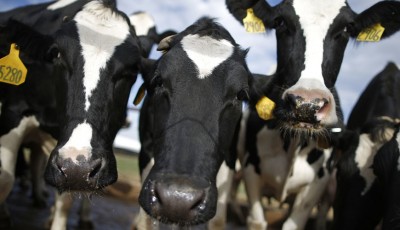Bovine Virus Tied to Human Breast Cancer
They compared samples from women who had breast cancer with women who have never suffered from the disease. They found BLV DNA in over half of the samples from women with breast cancer, whereas less than a third of the samples from women with no history of breast cancer showed evidence of exposure to BLV.
As per a co-author of the study, Gladys Block, UC Berkeley professor emeriti of nutritional epidemiology, the odds of having breast cancer were almost three times higher in subjects in which BLV was present.
Prof. Buehring notes that the research does not show how the virus infects breast tissue, but it could be through unpasteurized milk, uncooked meat or human-to-human transmission.
The oldest study to look at the presence that bovine leukemia has in cattle and dairy products was conducted in 1996, when the results showed that 89 percent (89%) of United States dairy operations tested positive for the virus. The same group of researchers at the University of California Berkeley involved in the new study also found a year ago that BLV could be transmitted to humans.
The journal PLOS ONE published this study and more information can be found there. Based on further investigations about the disease, it is closely linked to T-cell leukemia virus among humans. “EBV may be a cofactor in the development of some breast cancers”.
Buehring is confident, however, and acknowledges that this was a very “important first step” that medicine had to make.
The researchers compared the breast tissue of 239 women, some with and some without breast cancer.
The results were not only surprising but also a possible major concern since the odds presented by the virus exposure were higher than other commonly known risks of the disease such as obesity and hormones. “We still need to confirm that the infection with the virus happened before, not after, breast cancer developed, and if so, how”, Buehring noted. Buehring added, “Studies done in the 1970s failed to detect evidence of human infection with BLV”.
Let us start with the beginning and explain the bovine leukemia virus. The virus can actually be transmitted very easily in between cattle via infected milk and blood, but what is interesting about it is that it has a very low infection ratio: approximately 5% of the cattle get infected and die because of the virus. “It could shift the emphasis to prevention of breast cancer, rather than trying to cure or control it after it has already occurred”. Buehring. “As a result, there has been little incentive for the cattle industry to set up procedures to contain the spread of the virus”.









